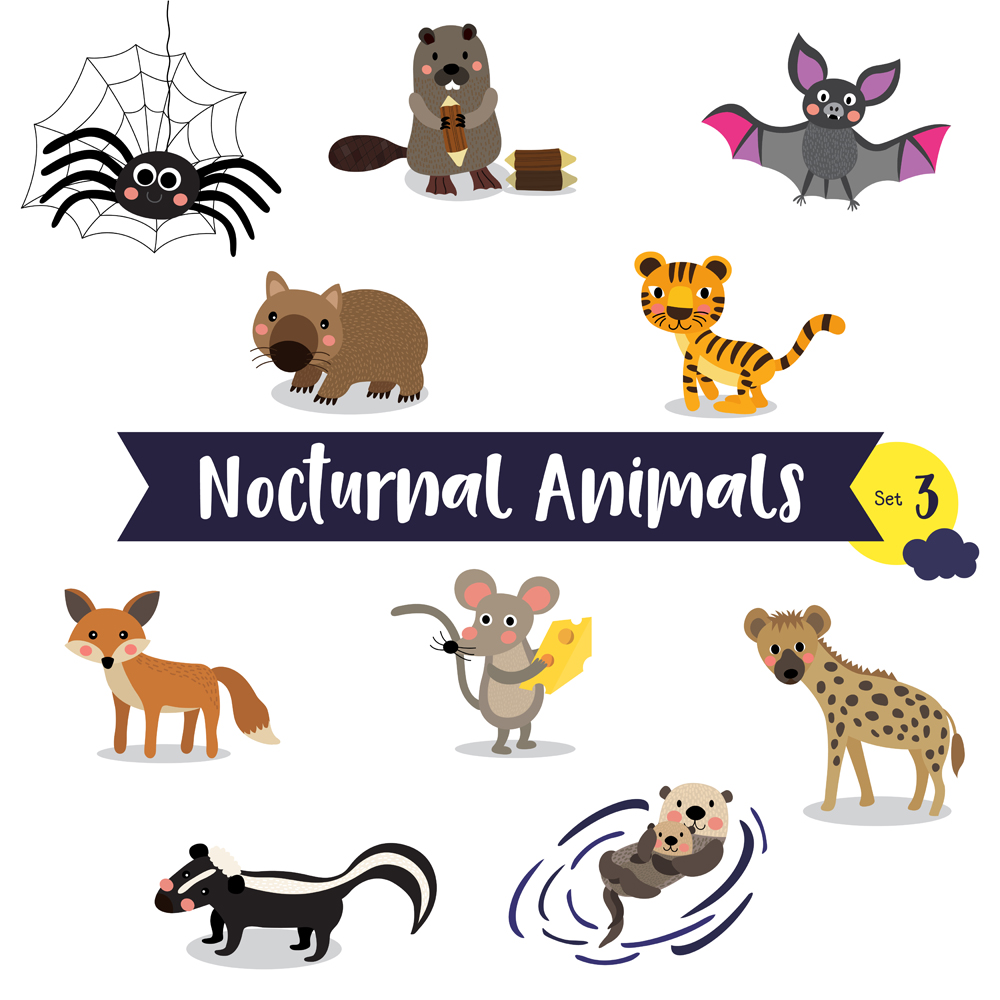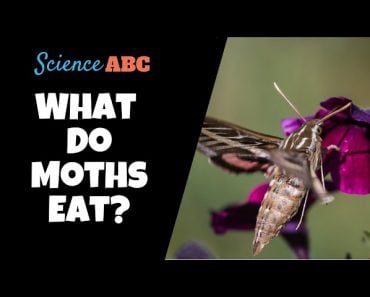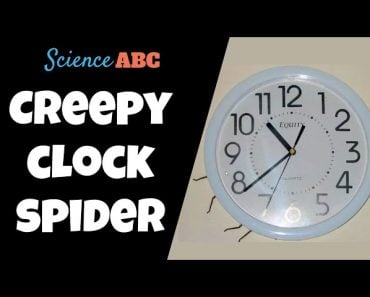Table of Contents (click to expand)
Nocturnal animals have an array of physical and sensorial adaptations that allow them to navigate and survive the darkness, both as predators and prey.
There are few things as haunting as the sound of an owl hooting beyond the shadowy ring of a campfire, but these vocal birds are far from the only creatures who feel more at home in the darkness. There are hundreds of nocturnal animals around the world, from bats and bush babies to leopards and tarantulas, all of which have found ways to survive in the nighttime hours, despite the lack of light.

The idea of a human wandering around in the pitch-black jungle and managing to secure itself a nutrient-rich meal seems laughable, as most of us can barely make it to the bathroom in the middle of the night without banging into the walls. However, many animals not only survive, but thrive, as a result of their nocturnal habits, so how do they do it? How do nocturnal animals hunt their prey?
Recommended Video for you:
Advantages Of A Nocturnal Life
To begin with, for those unfamiliar with the idea of “nocturnality”, this describes creatures who are primarily active at night, and instead sleep during the day. Most humans, and the majority of animals, are “diurnal”, meaning they sleep at night and are active during the day.
It is believed that throughout the course of evolutionary history, nocturnal behavior developed as a means of balancing an ecosystem, enabling a greater variety of species by reducing competition during the daytime hours. Obviously, this was not a conscious choice, but was achieved through adaptations that developed over the course of thousands of generations. The adaptations of nocturnal animals, which will be explained in greater detail below, would allow for more effective hunting at night, once the light began to fade.

Those individuals with such mutations or abilities would be able to find food when other predators had gone to sleep, or were unable to continue hunting. Successful hunting would lead to a higher chance of survival and a greater likelihood of passing along its genes—and its advantageous adaptation.
The advantages of a nocturnal life for those species equipped for it are significant, although some advantages benefit predators, and some help the prey. For predators of small mammals, nighttime is an excellent time to hunt because many such small rodents are similarly nocturnal, and for mid-sized predators, the lack of competition for this food is hugely beneficial.
For prey, it is harder to be detected at night, in comparison to the more numerous daytime threats, and there are also fewer predators hunting at night, since nocturnality is somewhat uncommon. Finally, for both predators and prey, nighttime is cooler, so in some parts of the world, being able to have your active hours at night will demand far less energy expenditure than chasing down your prey on a hot day at high noon!
Nocturnal Adaptations
If you have ever fumbled through the woods at night, completely lost and practically blind, what “superpowers” would you like to have? Well, considering that living creatures typically interact with the environment through sense organs, you may suggest the ability to see in the dark, hear things from far away, and smell with much greater specificity and focus.
The necessary adaptations for the thousands of nocturnal species around the world are right along the same lines, including more powerful or heightened senses of smell, touch, vision and hearing, along with other powers of perception that humans can only dream of!
Vision
While humans have created a number of technologies to see in the dark, such as night vision goggles, nocturnal animals have their own methods.
First of all, the eyes of nocturnal animals tend to be quite large and have pupils that can dilate to the extremes, allowing them to have “scotopic vision”.
Consider a cat in a dark room, when their eyes appear to be completely black, or think of an owl’s enormous and immobile eyes, which compose up to 3% of their body weight—1,000 times greater than the ratio of human eyes to body weight!
These enlarged eyes allow for more light collection, particularly because nocturnal animals tend to have more rods (black and white vision) than cones (color vision). Nocturnal animals can therefore navigate the darkness at the expense of seeing a variety of colors.

Other adaptations to the shape and function of eyes allow animals to have incredibly accurate depth perception, as well as telescopic vision, in some cases. Finally, many nocturnal animals have a specialized layer of reflective cells (tapetum lucidum) on the retina that bounce light back onto the rod cells, creating a feedback loop that even further brightens up the dark world for these animals!
Smell
A powerful sense of smell isn’t the most common nocturnal adaptation, but creatures like foxes, raccoons, coyotes and rats all have powerful olfactory organs, many of which are large in comparison to their body, and therefore possess a huge number of receptor cells.
These large noses can detect the complexity of scent molecules in the same way that humans may be able to detect the nuances of music, or varied spices in a complex dish with our gustatory sense. Some nocturnal insects, for example, are able to detect different scents on the air from miles away. If an animal’s vision isn’t acutely developed, an enhanced sense of smell can be a powerful nighttime asset!
Hearing
There is a saying that some rooms are “so quiet you could hear a pin drop”, but in reality, human’s aural powers are nothing compared to nocturnal animals. Humans can hear a frequency range of 2-5 kilohertz, which is pathetically low, even compared to our domesticated cats and dogs. Rats, for example, can hear up to 200 kilohertz, meaning that they can detect the movement of an insect from meters away!
The main reason for the super-sensory hearing of certain animals, such as rats, is the shape of their ears, which are often enlarged in comparison to body size, and cupped to better detect vibrations in the air.
Additionally, most nocturnal animals have asymmetrical hearing, meaning that their ears can hear independently from one another, allowing them to better locate and identify where things are by sound alone. It can be likened to triangulation, allowing the animals to hone in on precisely where and from how far away a sound emanated from.
Creatures like owls may have a similar ear structure to us, but they can hear “faster” and more “precisely”, so noise can be discerned more clearly. In other words, an owl could clearly tell the sound of a branch falling from a creature moving in the brush, whereas humans would only hear an indistinct rustle.
Touch
A small number of nocturnal creatures, particularly those who perpetually remain underground, will also rely on a heightened sense of touch to navigate their world and find prey. The star-nosed mole is an excellent example, as this creature has a nose ringed by 22 fleshy protuberances that literally feel the world around them as they dig through the dirt.
This hypersensitive organ can detect subtle movements of insects and worms in the mole’s burrow and quickly pluck them out of the darkness through the sense of touch alone! Other small rodents have similarly sensitive adaptations, such as naked mole rats, which are covered in movement-sensitive hairs that help it navigate underground in the dark.

Echolocation
Although echolocation is often lumped in as a form of “vision”, it is in fact a very different adaptation. Animals like dolphins are legendary for their use of this enviable skill. Echolocation is when an animal produces a high-frequency sound wave that it emits into the environment.
That sound wave will then rapidly bounce back from the objects in the vicinity, giving the nocturnal animal a “picture” of the surroundings and its position. This ability in nocturnal animals is most famously found in bats, although some birds also have this ability.
When one of these sound rays bounces off prey, a bat can quickly identify where it is, calculate the intercepting trajectory and snag its next meal. Their eyes do not provide them sharp and colorful vision like human eyes do, but they are expert hunters and dextrous fliers, showing just how effective and powerful echolocation can be!
Bioluminescence
Perhaps the least common adaptation for nocturnal animals, or at least the most overlooked one, bioluminescence is found in many creatures who live in the perpetual darkness at the bottom of the ocean. Special chemical compounds in their bodies interact to produce a bright glow, ranging from bright blue to bright red, depending on the concentration of luciferin (compound) and luciferase (enzyme) in the animal.

This glow can be used for hunting (attracting potential prey), defensive maneuvers (confusing predators), and for communication between members of the same species that danger may be near. Whether the hunted or the hunters, bioluminescence can make it easier to survive in the world’s darkest depths!
A Final Word
Human beings may act like we have conquered the darkness with electricity and technology, but the natural world long ago became the masters of the night. Nocturnal animals display an impressive array of adaptations that have allowed them to flourish and find their niche within competitive environments around the world, from jungle canopies to the bottom of the ocean!
References (click to expand)
- Night Vision: How Animals See in the Dark.
- More Animals Becoming Night Owls, Thanks to Humans.
- Light Pollution Affects Mammals in the Environment.
- Charles-Dominique, P. (1975). Nocturnality and Diurnality. Phylogeny of the Primates. Springer US.
- Healy, S., & Guilford, T. (1990, March). Olfactory-Bulb Size And Nocturnality In Birds. Evolution. Wiley.













